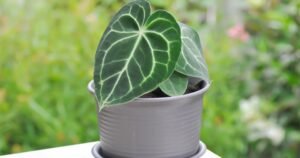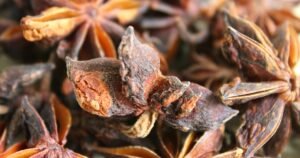Bleach, primarily composed of chlorine and sodium hydroxide, is a potent disinfectant commonly used in household cleaning.
However, The Effects of Bleach on Plants can be detrimental.
Clorox Disinfecting Bleach is excellent for maintenance in your backyard and will not harm your grass or plants when used as directed.
A 10% bleach solution is highly toxic to most plants and will likely cause severe damage or even death.
While no bleach concentration is entirely safe for plants, a highly diluted solution of 1-2% bleach may be less harmful.
Exposure to bleach can damage plant tissues, impede essential processes like photosynthesis, and potentially lead to plant death.
Chlorine in high concentrations can disrupt nutrient uptake, inhibiting the plant’s growth and development.
Sodium hydroxide, on the other hand, can alter the pH of the soil, making it less conducive to plant health.
Therefore, using bleach sparingly and cautiously around plants is advisable to prevent unintended harm.

Introduction To The Effects of Bleach on Plants
Bleach, a common household disinfectant, is known for its potent antimicrobial properties.
However, it can also adversely affect plants when used in excessive concentrations.
This article aims to explore the impact of bleach on plants, focusing on varying concentrations and their effects on plant health.

Understanding Bleach and Its Components
What is Bleach?
Bleach is a chemical solution primarily composed of sodium hypochlorite, a potent disinfectant and oxidizing agent.
It is widely used for sanitizing and cleaning surfaces to kill bacteria, viruses, and other pathogens.
Sodium Hypochlorite Concentrations
Bleach concentrations vary, typically from 3% to 8.25% sodium hypochlorite.
Higher concentrations are more potent and effective in disinfection, but they can also be more harmful to plants.

Impact of Bleach on Plants
The detrimental effects of bleach on plants are manifested in various ways.
When applied directly, bleach can burn plant tissues, leading to discoloration, wilting, and, in severe cases, plant death.
Also, bleach alters the soil’s pH, rendering it alkaline. Many plants prefer slightly acidic to neutral pH levels and struggle to absorb essential nutrients in alkaline conditions.
Moreover, the chlorine in bleach can disrupt the process of photosynthesis, impairing the plant’s ability to generate food and energy.
High concentrations of bleach may even interfere with the plant’s root system, impeding nutrient and water uptake, which can stunt growth and development.
Therefore, while bleach is a powerful disinfectant, its use should be limited around plants to prevent causing unintentional harm.
Direct Contact with Bleach
The Effects of Bleach on Plants Direct contact with bleach, regardless of concentration, can cause significant harm to plants. The adverse effects may include:
- Leaf Damage and Browning: Bleach can cause leaves to turn brown, wilt, or exhibit necrosis due to its oxidizing properties.
- Root Damage: When bleach comes into contact with the roots, it can inhibit root growth, disrupt nutrient uptake, and even lead to root death.
- Stunted Growth: Exposure to bleach can slow growth and development, affecting the overall health and vitality of the plant.
Bleach Dilution and Plant Impact
Bleach, when diluted, may not be as harmful to plants as in its concentrated form.
However, bleach can still pose a significant risk to plant health, even in reduced concentrations.
Diluted bleach can still alter the soil’s pH level, making it too alkaline for most plants to thrive.
Furthermore, the chlorine present, even in a diluted solution, can disrupt the process of photosynthesis.
Nonetheless, in some cases, a highly diluted bleach solution may be used as a last resort for treating certain plant diseases, with careful application to avoid damage.
Always remember that any benefits from using diluted bleach should be weighed against the potential risks to the plant’s health and development.
Low Concentrations (1-2%)
Using a highly diluted bleach solution (1-2%) may be less harmful to plants, but caution should still be exercised. Effects may include:
- Minimal Leaf Damage: Diluted bleach may cause minor leaf damage or discoloration but is less likely to cause severe harm.
- Potential for Recovery: Some hardy plants may recover if exposed to low concentrations for a short period, especially if adequate watering and care follow.
Moderate Concentrations (3-5%)
Moderate concentrations of bleach (3-5%) pose a higher risk to plant health:
- Leaf Damage: Moderate concentrations can cause visible leaf damage, including browning, wilting, and yellowing.
- Reduced Photosynthesis: Chlorophyll breakdown due to bleach exposure can reduce the plant’s ability to photosynthesize effectively.
High Concentrations (6% and above)
High concentrations of bleach (6% and above) are highly toxic to plants and should be avoided:
- Severe Damage and Death: Exposure to high concentrations can cause severe damage to plant tissues, leading to death in most cases.
- Root System Destruction: The root system is particularly susceptible to damage, disrupting the plant’s ability to absorb water and nutrients.

Guidelines for Safe Use of Bleach Around Plants
Guidelines for Safe Use
To minimize the risk of plant damage while using bleach for disinfection and cleaning, consider the following guidelines:
- Avoid Direct Exposure: Always ensure that plants do not come into direct contact with bleach.
If you need to use bleach for cleaning nearby surfaces, shield your plants or move them to a safe distance before starting.
- Use Diluted Bleach: Using a highly diluted solution is better than using bleach near plants.
A concentration of 1-2% is generally less harmful, but even at this concentration, caution should be exercised.
- Rinse With Water: If plants inadvertently come into contact with bleach, rinse them thoroughly with water as soon as possible to mitigate the damage.
- Consider Alternatives: There are many plant-friendly alternatives to bleach available. Consider using vinegar, baking soda, or natural plant-based disinfectants to minimize the risk to your plants.
- Monitor Plant Health: After using bleach, keep a close eye on your plants for a few days to detect any signs of damage or distress.
Dilution and Precautions
- Proper Dilution: Always dilute bleach to a safe concentration before using it near plants. Follow recommended dilution ratios to minimize harm.
- Avoid Direct Contact: Ensure that bleach does not come into direct contact with plant leaves, stems, or roots. Apply it carefully and precisely to the target area.
Alternative Disinfectants
- Plant-Safe Alternatives: Consider using plant-friendly disinfectants or mild soapy water for cleaning and sanitizing plant-related equipment or surfaces.
- Natural Disinfectants: Explore natural disinfectants like vinegar or hydrogen peroxide, which are less harmful to plants than bleach.
Conclusion
The Effects of Bleach on Plants With its potent disinfecting properties, Bleach can harm plants if not used cautiously. Understanding the concentration levels and potential effects on plants is crucial to ensure their well-being. Utilizing safe dilutions, avoiding direct contact, and considering plant-friendly alternatives are vital to protect plants while using bleach for other household purposes. Balancing effective disinfection with plant care is vital in maintaining a healthy environment for humans and the greenery.
FAQs
Will 1% bleach kill plants?
A 1% bleach solution may not necessarily kill plants but can potentially cause harm. It can induce leaf damage or discoloration and disrupt photosynthesis.
However, some resilient plants may recover from such low concentrations, especially with proper care and watering post-exposure.
In general, it’s advised to avoid bleach around plants whenever possible.
Will 10% bleach kill plants?
A 10% bleach solution is highly toxic to most plants and will likely cause severe damage or even death.
Exposure to such high concentrations can harm plant tissues, disrupt photosynthesis, and destroy the root system, preventing the plant’s ability to absorb water and nutrients.
It’s highly advised to avoid such high bleach concentrations near plants.
What percentage of bleach is safe for plants?
While no bleach concentration is entirely safe for plants, a highly diluted solution of 1-2% bleach may be less harmful.
Despite this potential leniency, it’s crucial to avoid direct contact, rinse with water immediately if exposure occurs, and consider plant-friendly alternatives whenever possible.
Monitoring plant health post-exposure is also essential in mitigating any possible harm.
Will bleach kill my plant?
Direct bleach application, even in diluted form, will likely harm your plant.
It can cause leaf damage, disrupt photosynthesis, and potentially lead to plant death due to root system damage.
Although certain resilient plants may survive mild bleach exposure, it’s recommended to use alternative, plant-friendly disinfectants to safeguard your plants’ health.











